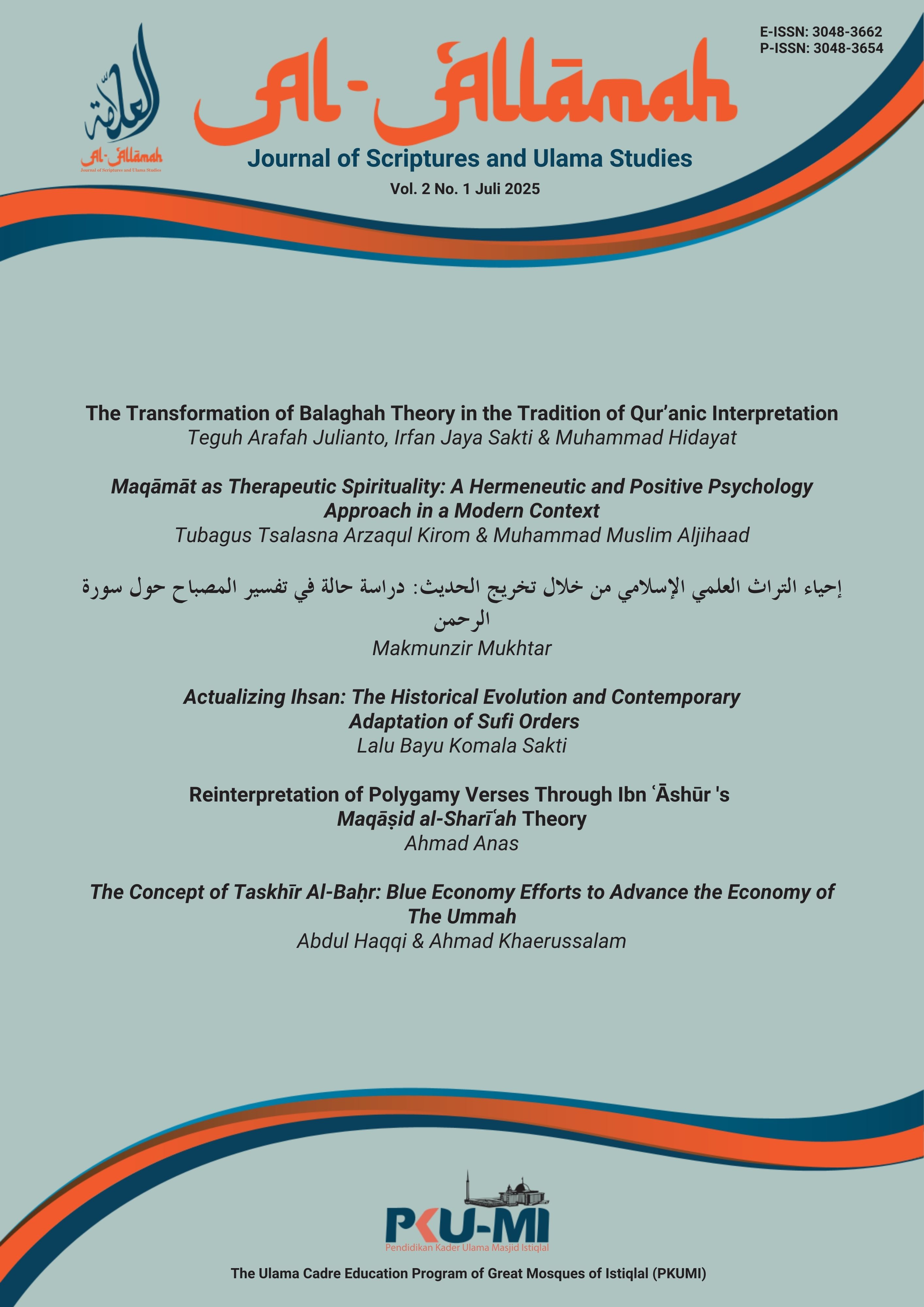Actualizing Ihsan: The Historical Evolution and Contemporary Adaptation of Sufi Orders
DOI:
https://doi.org/10.70017/al-allmah.v2i1.21Keywords:
Sufism, Tariqah, Ihsan, Historical Evolution, Modernity.Abstract
This research examines the evolution of Sufism as the practical actualization of ihsan (spiritual excellence), tracing its development from an ethical-ascetic orientation to speculative-philosophical dimensions, its institutionalization into global Sufi orders (tariqah), and its contemporary adaptation mechanisms. The central research question is: How did the diverse streams of Sufi thought, rooted in the concept of ihsan, historically evolve and institutionalize, and what strategies enable them to maintain relevance in a globalized, modern world, particularly in Southeast Asia? This study employs a qualitative library research method with a historical-phenomenological framework. Data is synthesized from foundational Islamic texts like the Hadith, classical Sufi works such as Al-Ghazali's Ihya' 'Ulum al-Din, Rumi's Matsnawi, and Ibn 'Atha'illah's Al-Hikam, modern academic books, and recent peer-reviewed journals. The findings indicate that Sufism, far from being a marginal phenomenon, is a central and dynamic dimension of Islam rooted in the tripartite framework of Islam-Iman-Ihsan. It has evolved through distinct historical periods: formative (9th-12th c.), consolidation during major empires (15th-17th c.), and reformist (17th-19th c.). Its enduring vitality lies in the adaptive capacity of the tariqah structure. In the contemporary era, Sufi orders demonstrate remarkable resilience by embracing digital technologies, engaging in inter-religious dialogue, and continuing a tradition of cultural hybridization. This adaptability ensures Sufism's continued relevance as a living tradition for actualizing ihsan in the modern world.











